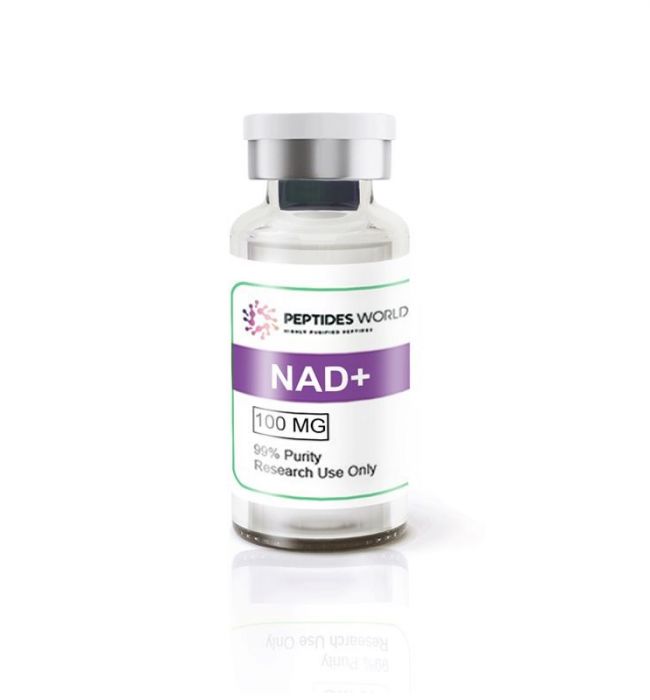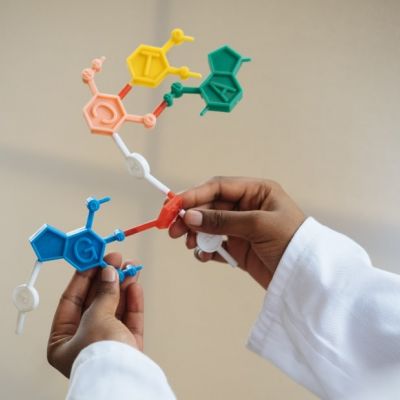NAD+ Peptide
Sir Arthur Harden discovered a component with a low molecular weight in boiling yeast extract that may promote in-vitro fermentation and alcohol production. Nicotinamide Adenine Dinucleotide, or NAD+ for short, was the name given to this molecule later on.
It was first discovered about a century ago.
The following studies revealed that the structure of NAD+ was made up of two mononucleotides that were covalently linked.
Furthermore, these findings demonstrated that NAD+ and NADH played the key role of enzyme cofactors that mediated hydrogen transfer in either oxid.
NAD+ is a chemical found in all living things, from primitive single-celled organisms like bacteria to complex multicellular species like humans.
We’d be racing against the clock to the grave if we didn’t have NAD+.
The operation of the cell’s power plants, the mitochondria, is heavily reliant on this molecule.
NAD+ not only aids in the conversion of food into useful energy, but it also plays an important role in preserving the integrity of our DNA and ensuring that our cells function properly.
This process aids in the protection of our bodies against the destructive consequences of aging and sickness.
How does NAD+ function?
Within a cell, NAD+ acts as a shuttle bus, transporting electrons from one molecule to another to carry out various chemical reactions and other tasks.
This important molecule, along with its chemical counterpart, NADH, participates in a variety of metabolic actions that are responsible for energy production in the cell.
Without adequate NAD+, the body’s cells would be unable to produce any energy, making it difficult for them to live and perform their functions.
NAD+ is also involved in the regulation of the circadian rhythm, which is the biological clock that governs when organisms sleep and when they are awake.
NAD+ levels decline with age
NAD+ levels in the body tend to decline with age, which can have serious consequences for metabolic function and age-related diseases.
The buildup and progression of DNA damage is a natural result of aging.
The breakage of the genetic code causes the activation of numerous proteins, which include PARP enzymes.
Because PARPs consume NAD+, they can perform DNA repair functions.
It appears that the depletion of NAD+ induced by PARP activation during the aging process leads to the development of many disorders.
According to numerous specialists, PARPs are thought to contribute the most to all of these distinct processes that require NAD+.
NAD+ is also utilized by enzymes found in our immune system.
The enzyme consumes more NAD+ when the immune system becomes more active.
Sirtuins are a separate class of enzymes that can use NAD+.
These proteins use NAD+ to regulate metabolism, stabilize chromosomes, and repair damaged DNA.
The presence of these proteins is linked to both healthy aging and longevity.
Sirtuins require an increasing amount of NAD+ as they age due to the accumulation of DNA damage and chromosomal instability.
What conclusions have the research studies drawn?
Several investigations have revealed that NAD+ is capable of the following:
- Reduce the negative consequences of aging
- Muscle function should be improved.
- Enhance metabolic illnesses
- Heart performance at its peak
- Neuroprotective properties
Reduced NAD+ levels have been linked to the hallmarks of aging and a variety of age-related ailments, including metabolic disorders, cancer, and neurodegenerative diseases.
The physical changes that occur as an organism age are the hallmarks of aging.

When NAD+ levels are restored by consuming the compound’s precursors, it is useful in preventing age-related illnesses and slowing the aging process.
It is critical to note that boosting NAD+ levels has been shown to extend the longevity of numerous experimental animal models such as worms, flies, and rats. In metabolic illnesses, the implications of NAD metabolism shift.
Also, read Lucia Gibson, Storm Brieanne Sixx, Ka Ho Cho
Advantages for the Heart
The arteries act as a buffer between the pressure waves produced by the beating heart due to their suppleness.
However, as people age, their arteries stiffen, which adds to high blood pressure.
One of the most significant risk factors for cardiovascular disease is high blood pressure.
According to CDC figures, the cardiovascular disease claimed the life of one person every 37 seconds in the United States alone.
Hypertension can cause an enlarged heart and clogged arteries, both of which can contribute to strokes.
Increasing NAD+ levels protects the heart, which enhances its function.
NAD+ supplements have been proven in mice to restore NAD+ levels in the heart to baseline levels, reducing cardiac damage caused by a drop in blood flow.
Other studies have shown that NAD+ boosters are beneficial in avoiding abnormal heart hypertrophy in mice.
If you are a researcher looking to purchase NAD+ for your scientific study, please go here.




